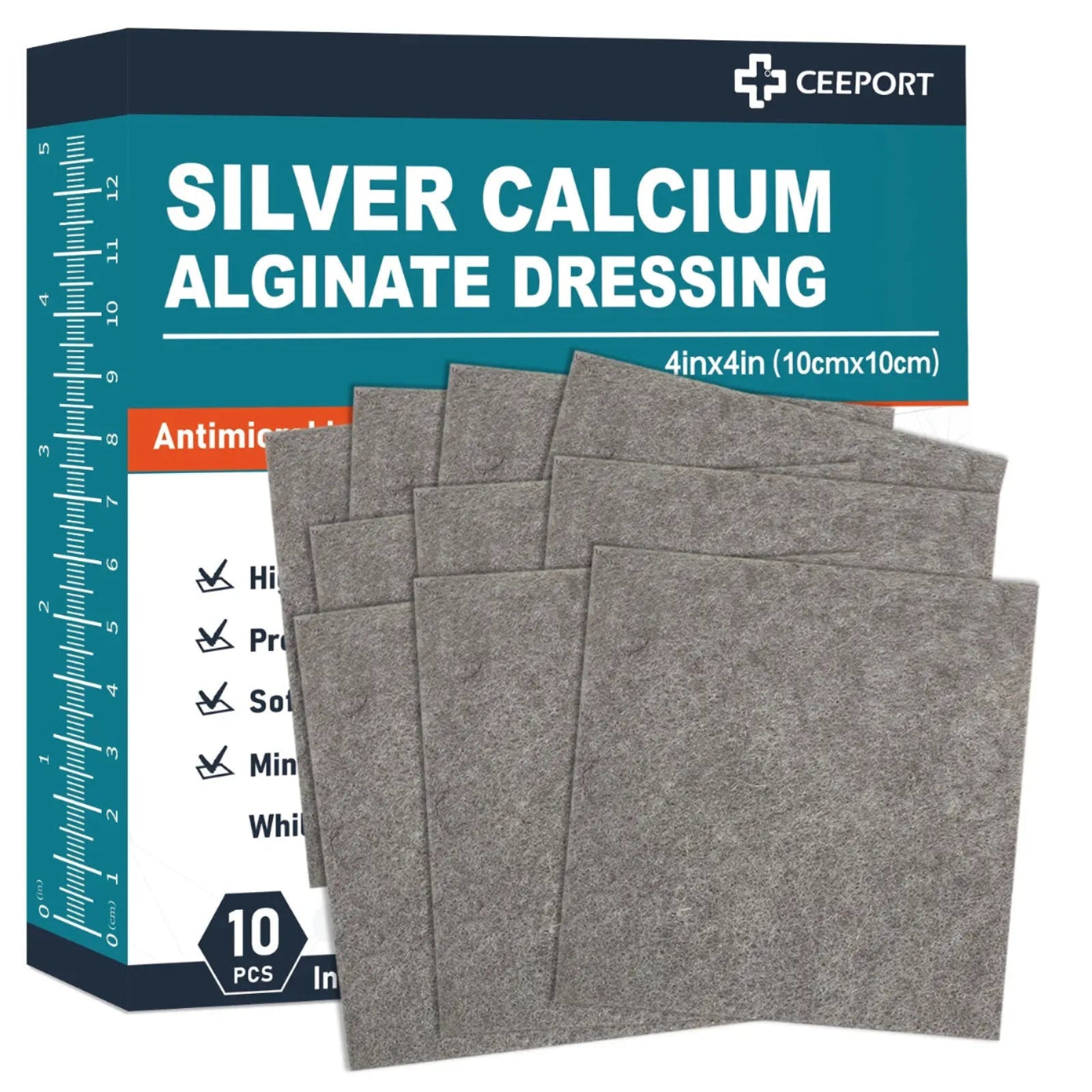

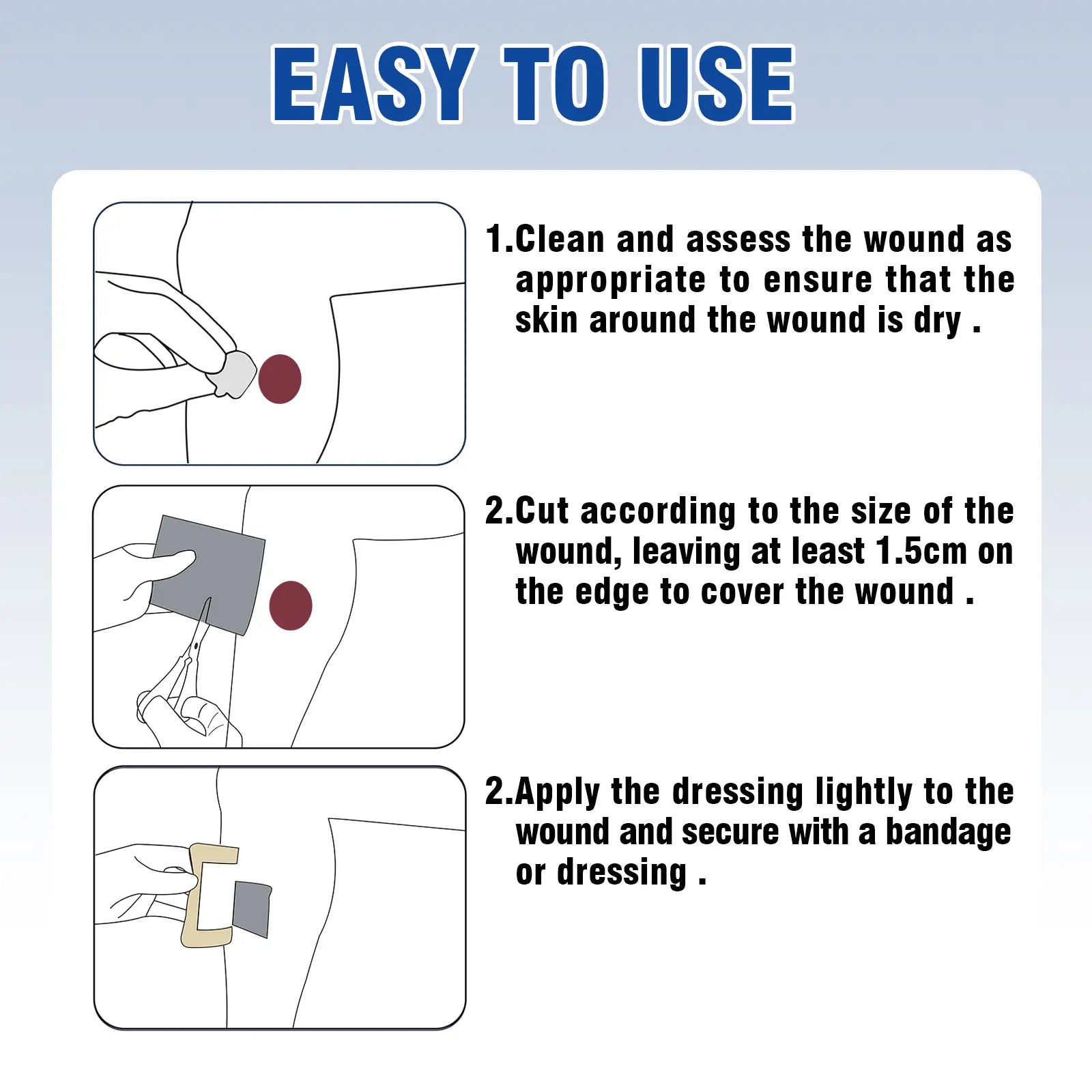
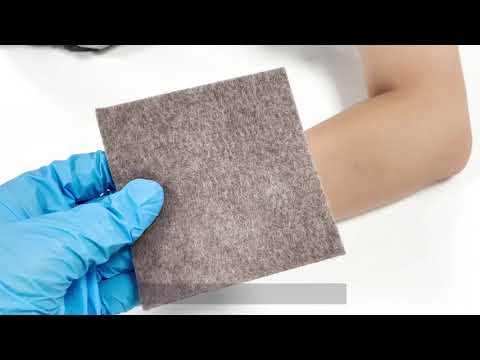
Silver Wound Dressings: Next‑Generation Antimicrobial Care
Indications
This dressing is intended for managing high-exudate wounds, including those at risk of bacterial growth or difficult to heal.
It is commonly used for chronic wounds, deep wound packing, donor and graft sites, and other wounds where moisture control and exudate management are essential.
Suitable applications include ulcers, pressure sores, diabetic foot ulcers, surgical incisions, sinus tracts, second-degree burns, and post-operative wounds.

Silver Wound Dressings: Next‑Generation Antimicrobial Care
DETAILS
Material
- Alginate fiber
- Silver ions
Main Mechanism
Silver alginate dressings gradually release silver ions when in contact with wound exudate. The level of exudate influences the rate of silver ion release. These ions are known to interact with bacterial cell components, helping reduce microbial activity and supporting a cleaner wound environment.
Silver may also assist in maintaining a balanced microenvironment by modulating ions such as zinc, calcium, and copper—factors associated with skin regeneration and wound care.
Key Features
- High absorption capacity to help manage moderate to heavy exudate
- Silver-infused dressing helps reduce a broad spectrum of microbial activity
- Supports natural hemostasis in exuding wounds
- Maintains a moist environment to support wound care and skin balance
- Soft and flexible design for greater comfort and low-trauma removal
Cautions
- Clean the wound with saline and dry the surrounding skin before use.
- Do not soak the silver ion dressing in saline before use.
- A secondary dressing, such as silicone foam dressing or Island dressing, should be used in combination.
- Based on clinical use, it is recommended to change the dressing every 2-4 days.
- It should not be applied to dry wounds or wounds with exposed bones, muscles, tendons, or fascia.

Silver Wound Dressings: Next‑Generation Antimicrobial Care
Product Overview
Our silver wound dressings merge cutting‑edge antimicrobial technology with exceptional fluid management. Each dressing features a soft, conformable alginate core infused with ionic silver to deliver sustained infection control. Designed for acute and chronic wounds, these silver wound dressings adapt to exuding sites—locking in moisture and repelling contaminants for optimal healing.
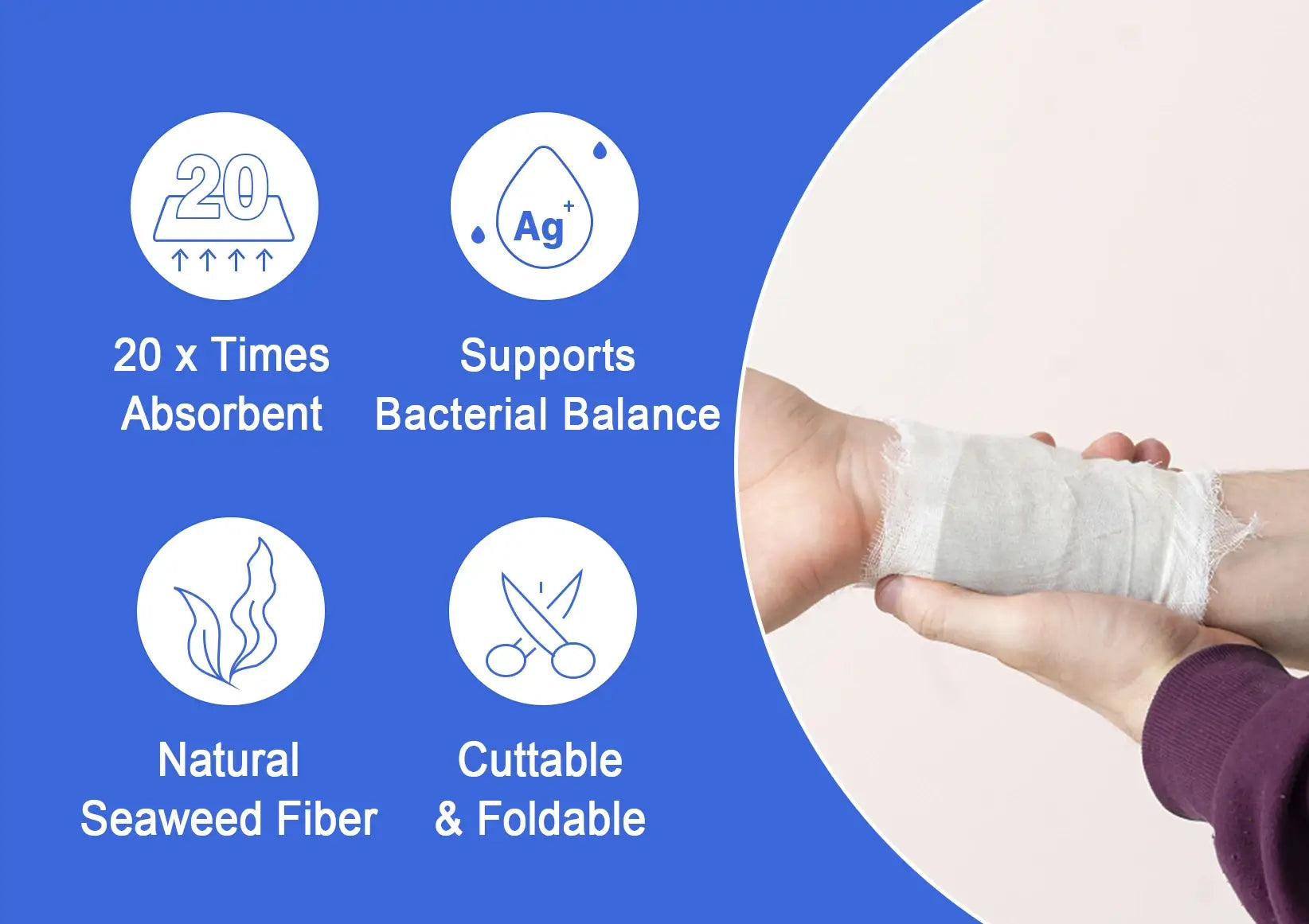
Key Advantages of Silver Wound Dressings
- Broad‑Spectrum Protection: Silver ions in our silver wound dressings disrupt bacterial membranes and inhibit biofilm formation, reducing infection risk.
- Superior Exudate Control: The alginate matrix absorbs up to 20× its weight, maintaining a balanced moist environment without maceration.
- Comfort & Conformability: Ultra‑thin and flexible, silver wound dressings conform to irregular wound beds, minimizing pain during wear and removal.
- Extended Wear Time: Clinically tested silver wound dressings stay effective for up to 5 days, cutting down on dressing changes and patient discomfort.
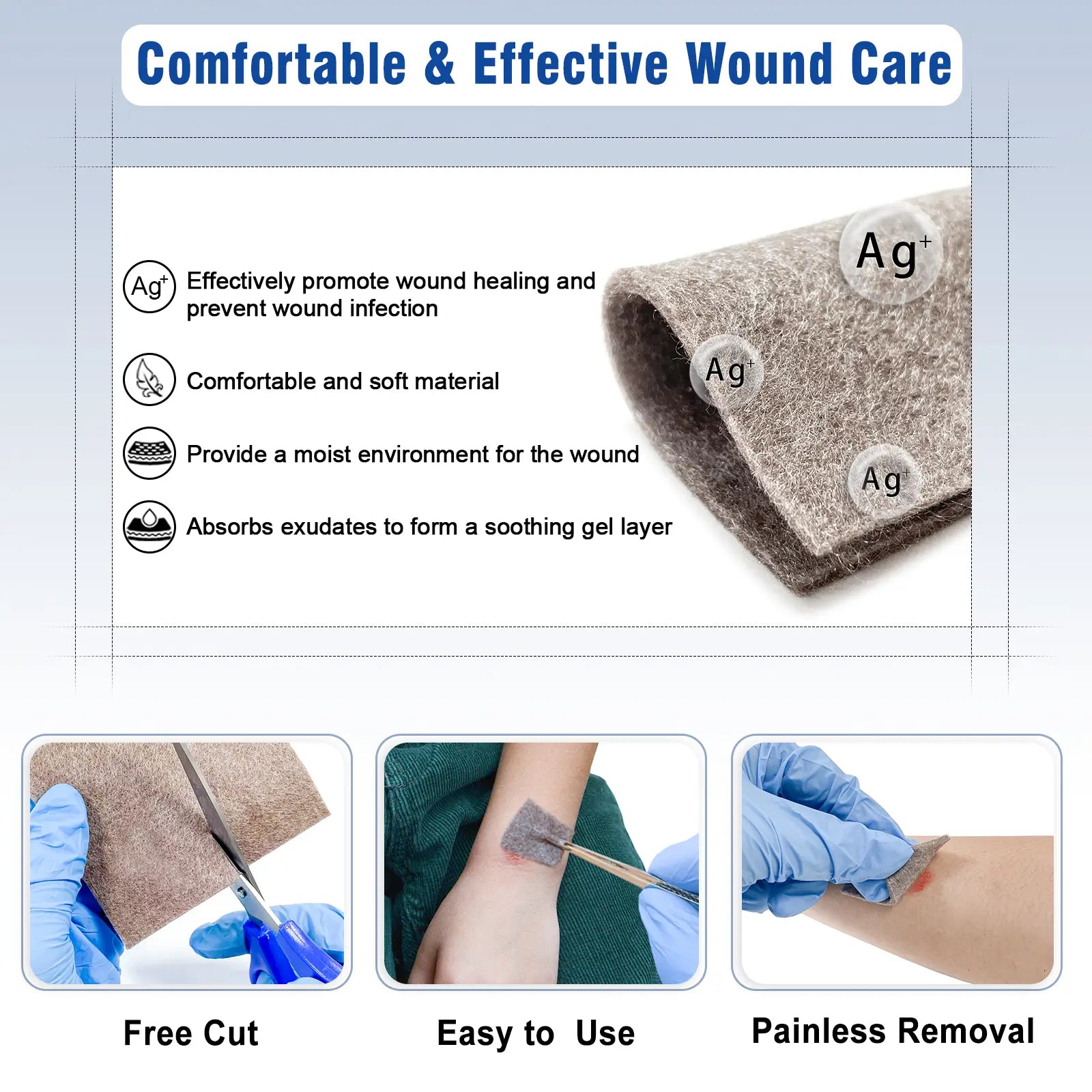
Mechanism of Action
When applied, silver wound dressings exchange calcium ions with wound fluid to form a gel that locks in exudate. As the gel maintains contact, silver ions are steadily released into the wound bed, targeting pathogens while preserving healthy tissue. This dual action makes silver wound dressings a reliable choice for both contaminated and high‑risk wounds.
Application & Usage Guidelines
- Clean & Dry: Gently cleanse the wound with sterile saline, then pat the surrounding skin dry.
- Size & Apply: Trim the silver wound dressing pad to extend at least 1 cm beyond the wound edges. Place the silver‑infused side directly on the wound bed.
- Secure & Monitor: Overlay with a secondary non‑adhesive pad or light bandage. Inspect daily for saturation or odor.
- Replace as Needed: Change silver wound dressings every 2–5 days, or sooner if fully saturated, to maintain antimicrobial efficacy and optimal moisture balance.
Easy to Use

Clean
Clean the wound and dry the surrounding skin gently.
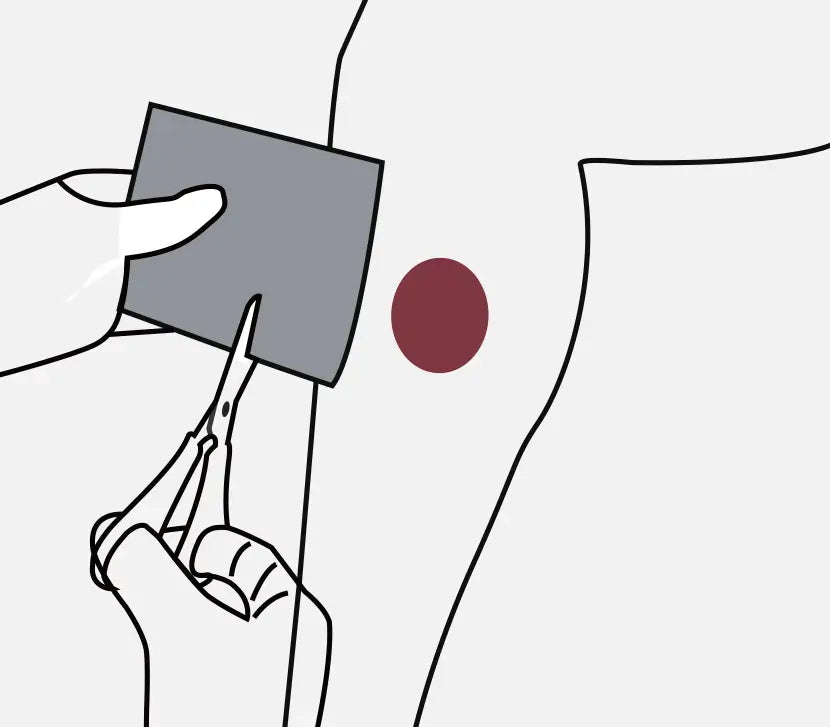
Cut
According to the size of the wound, cut it to the appropriate size.
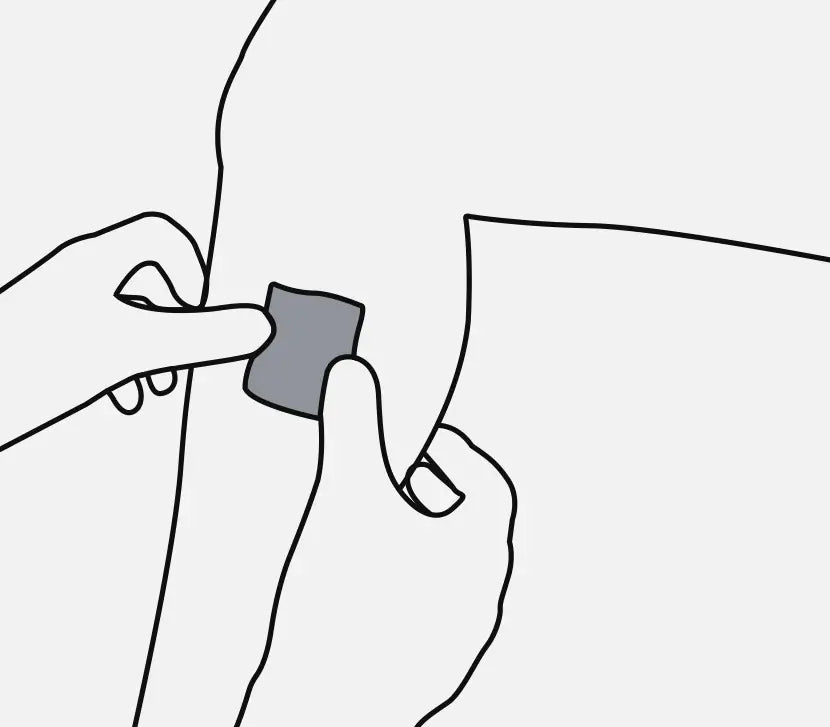
Apply
Apply the wound dressing to overlap the wound edges at least 1 cm.
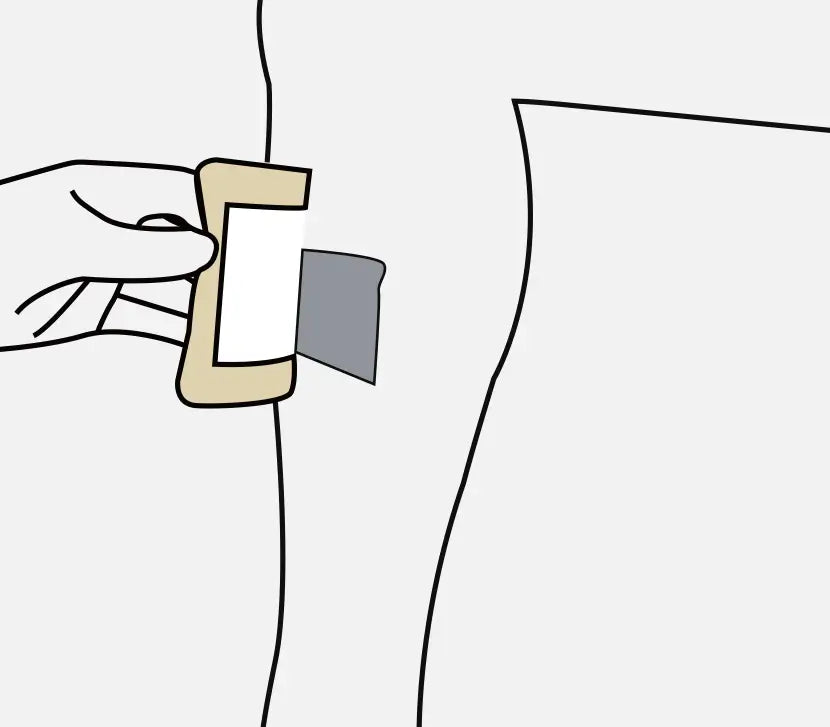
Fixed
Fixed it with a bandage or dressing
You asked, we answered.
What types of wounds is it suitable for?
- Infected wounds or wounds at risk of infection
- Moderate to heavily exuding wounds
- Pressure ulcers (stage II–IV)
- Diabetic foot ulcers
- Surgical wounds
- Second-degree burns
- Traumatic wounds
Can silver alginate dressing be used on non-infected wounds?
Yes, it can be used prophylactically on wounds that are at high risk of infection, but it's generally recommended for infected or critically colonized wounds. For clean, low-risk wounds, a non-silver alginate dressing may suffice.
How much exudate can it absorb?
Calcium alginate with silver are designed to absorb moderate to heavy levels of exudate. When in contact with wound fluid, they form a gel-like substance that maintains a moist wound environment to support healing.
How often should silver wound dressings be changed?
- Moderate to high exudate wounds: Change every 24–48 hours.
- Low exudate wounds: Change every 48–72 hours.
- Signs of infection or dressing saturation: Change immediately.
- Always consult with a healthcare provider for the specific needs of the wound and the patient.
How do I choose the right size?
Ensure that the calcium alginate ag dressing extends at least 1-2 cm beyond the wound edges. This helps to form a seal and prevents the dressing from lifting, while also minimizing the risk of contamination.
How to choose between silver ionized alginate dressing and calcium alginate dressing?
- Choose Silver Alginate Dressing if the wound is infected or at high risk of infection, or if you're dealing with heavily exudating wounds.
- Choose Calcium Alginate Dressing for clean, non-infected wounds that need good absorption, moisture balance, and support for tissue regeneration without the need for antibacterial properties.
Will it stick to the wound?
Silver alginate dressings are better suited for wounds with moderate to heavy exudate. If applied to wounds with minimal fluid, the dressing may not fully gel, which can result in slight adherence to the wound surface. In such cases, gentle irrigation with sterile saline can help soften the dressing and ease removal.
Is it safe for sensitive skin?
Antimicrobial silver alginate dressings are generally well-tolerated. However, individuals with known sensitivity to silver should use with caution. Discontinue use if signs of irritation, redness, or allergic response appear.



